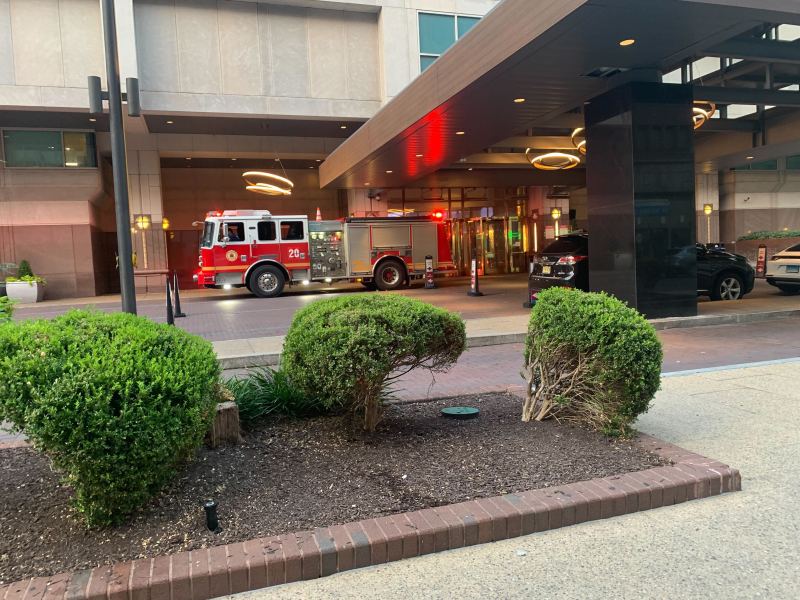At 6:10 a.m. this morning, the Philadelphia Marriott Downtown’s emergency alarm system turned on, alerting guests and staff that there was a possible emergency in the building.
The cause of the alarm is still under investigation, according to hotel staff who spoke with the ONA Newsroom. Online News Association officials said in an e-mail to attendees that the cause of the alarm was due to the 12th Street elevators going out of order. At the time of the event, some hotel staff suggested that someone may have pulled the alarm.
Hotel officials declined to comment further on the issue.
Between the two guest room towers of the Marriott, hotel guests received conflicting messages about the situation. The 12th Street building alarm — on the 19th and 21st floor — informed guests, “Attention, attention, there has been an emergency reported in this building. While this is being verified please stand by and wait for further instruction. Do not enter through the fire exits, do not use the elevator.”
However, residents on the 16th floor heard a different message.
“There has been an emergency reported, don’t use the elevators.”
Some guests exited through the stairs instead of sheltering in place.
The alarm briefly stopped at 6:27 a.m., before resuming again at 6:34 a.m. The second set of alarms was followed by an announcement from the hotel’s safety office saying there was no emergency activity and that the alarm “has been investigated and there is no emergency.”
Lauren Anderson, the event and membership manager of ONA, said that the organization has contingencies in place for these events. Typically, the ONA staff walk around the hotel and consult with a security manager a year prior to the event.
Anderson said she was already prepared for any kind of situation that may occur.
“We have to be 10 steps ahead of everybody else. So when things like these happen, we have protocols in place,” Anderson said.
She also said that when the alarm went off, she reached out to a security representative and talked to the hotel’s engineer. Anderson said she reached out to ONA staff and used an internal channel to make sure everybody in the hotel was okay.
A week before the conference, Anderson said, the entire ONA staff meets to discuss a five- to seven-page document that explains how to handle emergency situations. There’s also a leadership team responsible for communications within the organization and Anderson’s communication line was direct between her and the CEO of ONA.
Leah Rush, a member and event support consultant for ONA, said that she doesn’t recall an alarm like this at an ONA conference before. The only emergencies, Rush said, she remembers were medical emergencies.
“I would say emergencies like this are uncommon, I don’t really remember all of them but the ones that stick in my mind are health-related,” Rush said.






